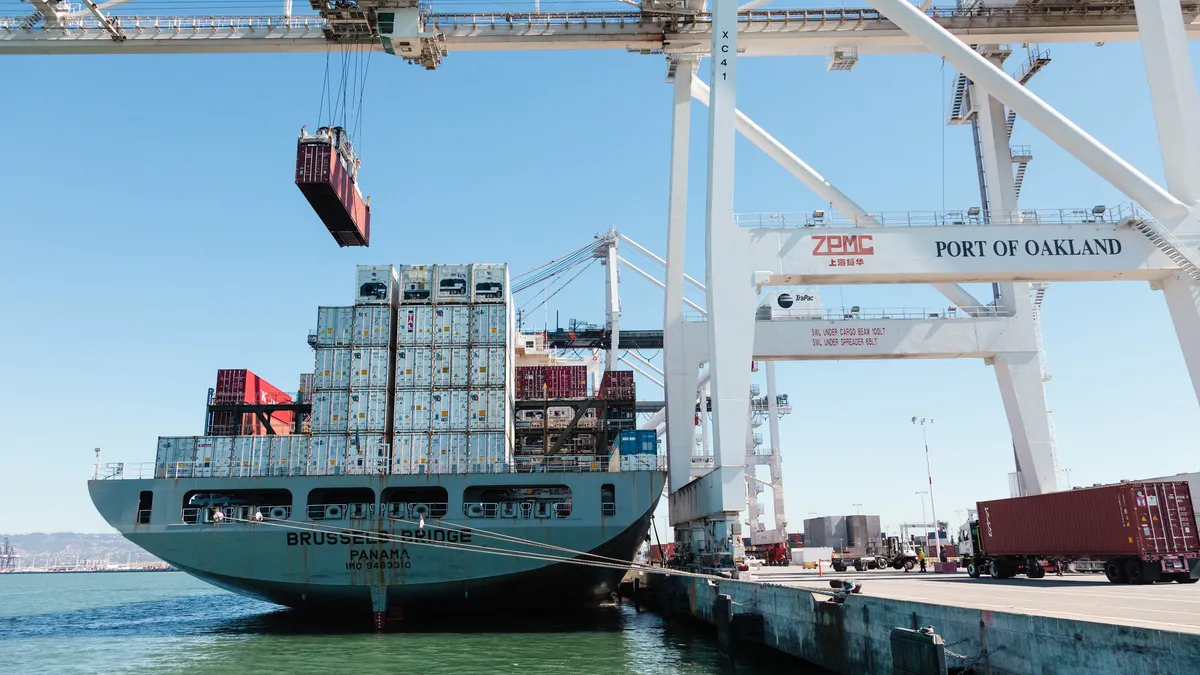Dive Brief:
- The drop in demand resulting from the factory slowdown in China will cost ocean shipping companies a combined $1.9 billion, according to the most recent estimate from Sea-Intelligence emailed to Supply Chain Dive. One week after Alphaliner reported the inactive fleet size has reached a record high, the dollar amount highlights the financial impact for carriers who have pulled millions of TEUs from their fleets in an attempt to better match freight supply to demand.
- Figures from Sea-Intelligence also highlight how much of the pulled capacity is the result of the COVID-19 outbreak. Of the 111 blank sailings on the Transpacific route, 48 cite the COVID-19 outbreak while the remainder are normal seasonal cancellations following Chinese Lunar New Year. There are 75 blank sailings on the Asia-Europe route — 29 blaming the outbreak, according to Sea-Intelligence.
- But there are signs the market is beginning to stabilize. "Even though the carriers have announced 7 more blank sailings over the past week, which corresponds to an additional 7% removal of capacity, the pace of new blank sailings has clearly declined, suggesting a belief from the carriers that volumes will slowly be brought back to normal levels," Sea-Intelligence CEO Alan Murphy wrote in the release.
Dive Insight:
"We can see signs of recovery on the bookings in China but we are not back to normal levels yet," Tim Seifert, the director of corporate communications for Hapag-Lloyd told Supply Chain Dive in an email. "However, the transport of sea freight between the hinterland and ports in China is showing gradual improvements over the last couple of days."
Manufacturers across China recently announced production restarted in some capacity or would begin in the coming weeks.
Foxconn executives acknowledged Tuesday it had cut capacity by 50% compared to its normal Q1 throughput, which is lower than the second half of the year, according to Nikkei Asian Review. The electronics manufacturer expects production to return to normal next quarter, but is planning to increase production capacity outside of China from 25% to 30% of the total, Nikkei reported.
Currently, ocean shipping rates are lower year-over-year (YoY) on the routes from China to the U.S. West Coast and East Coast, according to the latest figures from Freightos.
But shippers could experience some price shock as demand returns, according to Sea-Intelligence.
"Carriers are already pushing rate increases on account of this, and for some back-haul shippers the coming weeks might well be a matter of whether they can get their cargo moved at all, almost irrespective of the price they are willing to pay," the firm said in its release.
Multiple West Coast ports told Supply Chain Dive last week they are expecting YoY declines in volume for the first quarter as a result of COVID-19, an illness in the coronavirus family, and the resulting quarantine.















